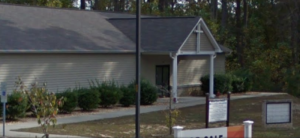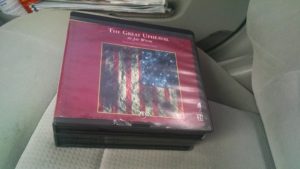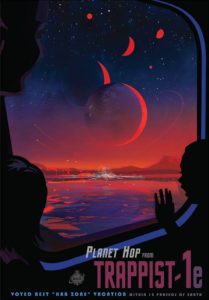Last night I attended an Eastern Orthodox Pascha celebration, right here in central North Carolina where I live. I have always been fascinated by this branch of Christianity, so long in pedigree, but not what I usually encounter in the Southern United States. A friend of mine has been attending their services, and I asked if I could come along, and he verified with the priest that I was welcome.
So at about 10pm we drove to the church, which turned out to be a small, squat building along a woody roadside, as common a structure as you will find in the South. We were warmly greeted by a couple of gentlemen at the front and ushered in. So then came my first surprise – the church was dark! There were no lights on, and it was hard to see anything. People helpfully guided us to where we were to take a thin, tapered candle from a box, and then we found some seats in the back.

As my eyes adjusted to the darkness, I could just make out the depictions of Jesus Christ and of the Madonna and infant Jesus, in the classic Byzantine style. The altar was actually separated from the congregation by basically a gate, a significant difference from the Roman Catholic church. The scent of incense was heavy in the air.
From behind the gate the priest started chanting, and was joined by deacons in front. They read from ornamented liturgical books, but in plainchant. Sometimes the congregation would respond, also chanting. The whole ritual evoked the ancient past – here was a way of worship that went back over a thousand years, almost unchanged, except that the participants were modern Americans and spoke/chanted in English. In the dark, the only distraction was the fussing of small children.
At one point we all lit our candles, starting with the priest, who then passed the flame to two worshipers in the front, who then passed it along. Then we processed out of the building, and around a path lit by luminaries, which we circled three times, and when we got back to the building, there proceeded a theatrical ritual of the priest requesting admittance, and being rebuffed. When eventually we were admitted, the lights were on inside.
The liturgy continued. I noticed a boy started crawling under the chairs, and I thought, my, he is rambunctious. But then I saw that an elderly man was tucking him in with a blanket! I saw that other children were now lying under the chairs, snoozing, and concluded that it must be that they were allowed to because of the late hour. The ritual was very long. The worshipers stood or sat as they wished; I realized that there was no formal requirement, although at certain points everyone stood.
In the later part of the ritual, the priest would say “Christ is risen!” and the response would be “Indeed he is risen!” Then he would repeat the phrase in a few other languages, and get some responses. I assumed one of the languages was Greek, but I didn’t know. In the end there was communion, a familiar rite to me from my Roman Catholic background. The priest blessed us with holy water, and also blessed a basket of red-dyed eggs.
The liturgy finished after over two hours – it definitely takes dedication to properly participate in the Orthodox church! But it felt like we earned the feast which followed, in tables set up in a separate space. Everyone had brought baskets full of food and wine. They were very welcoming of me; I sat with my friend next to a Romanian couple (they moved to the U.S. in 1980) and partook of food and conversation.
As the night wore on and the crowd thinned, we ended up in conversation with the priest and some of the deacons, all of them bearded and sporting wedding bands (no celibacy requirements for priests in this church). I learned that the building was only recently purchased, and is the second Orthodox Christian church in the county. I learned that the other languages spoken were Romanian, Arabic and Spanish (how did I miss that!) to reflect the languages spoken by congregants. I learned that the normally the liturgy begins at midnight (April 16 is the date of Pascha this year) but that a special dispensation had been received to begin at 10 pm from the Metropolitan – the Archbishop who presides over all of America and Canada.
We were up talking and drinking wine until well after 3:00 am. Luckily, it was a short drive to my friend’s house to finally sleep. I met some very cool people and am grateful for being welcomed to the celebration.



